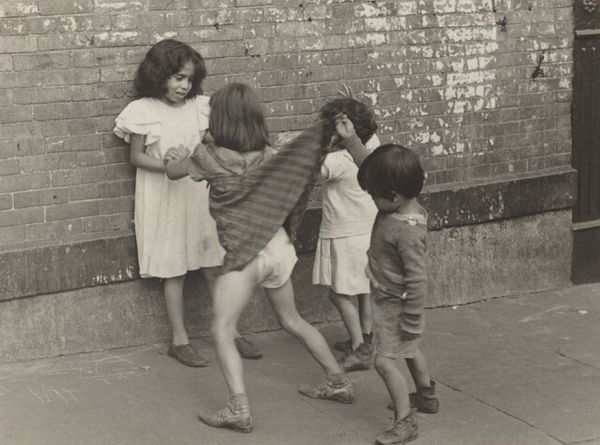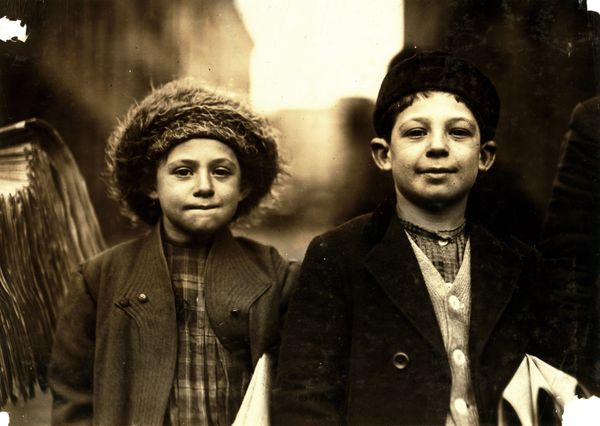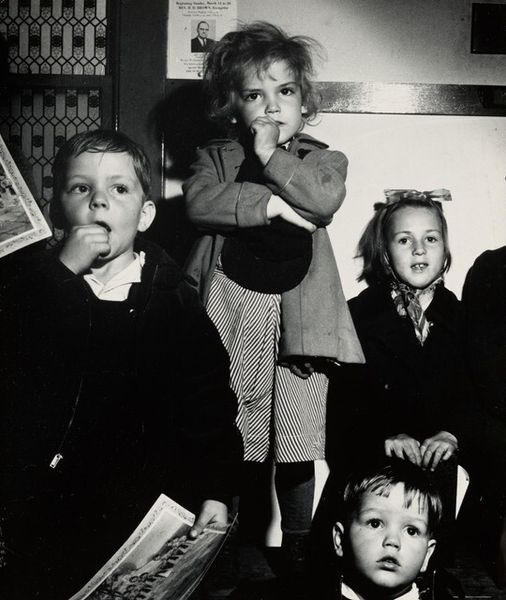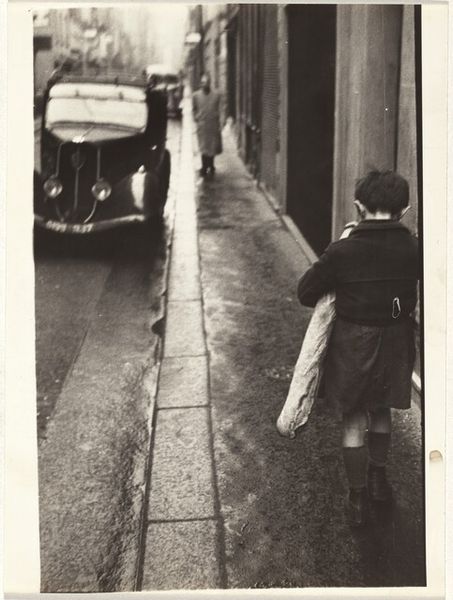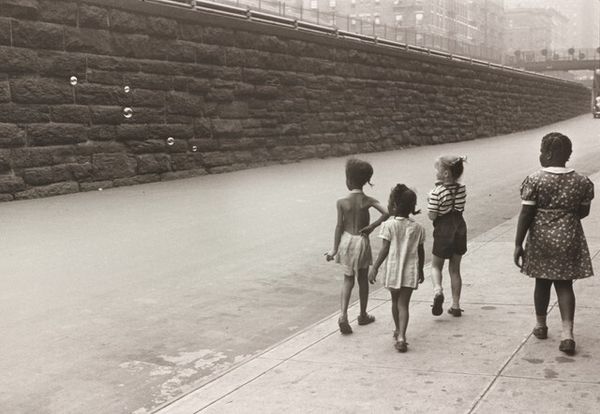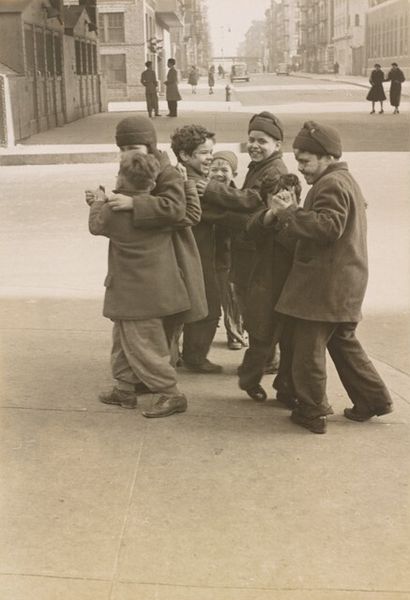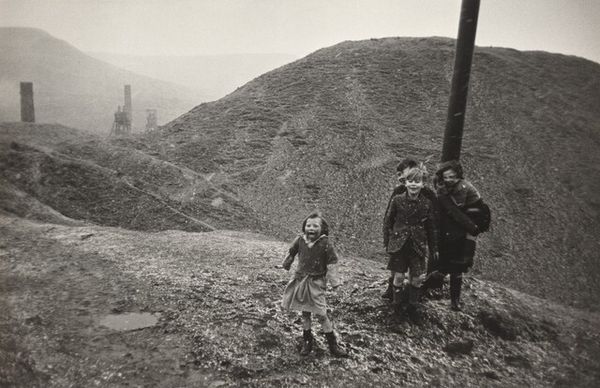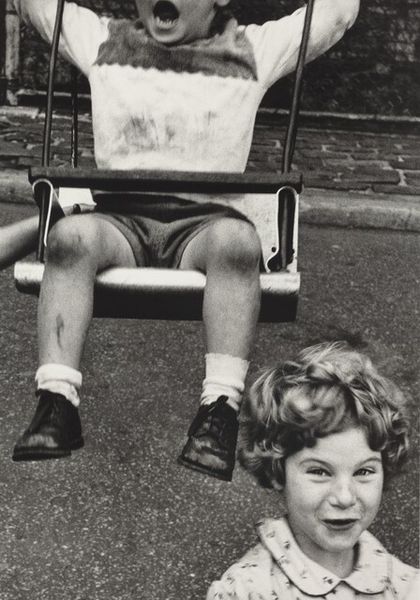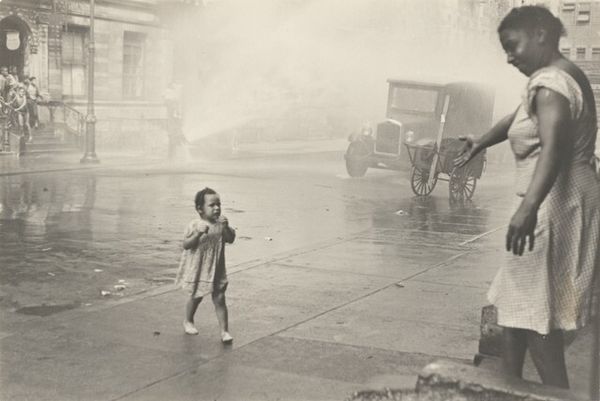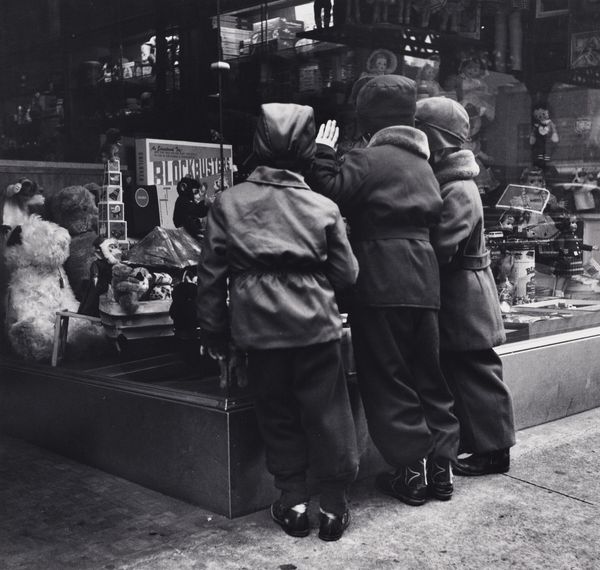
photography, gelatin-silver-print
#
portrait
#
black and white photography
#
social-realism
#
street-photography
#
photography
#
black and white
#
gelatin-silver-print
#
monochrome photography
#
genre-painting
#
monochrome
#
monochrome
Dimensions: overall: 25.1 x 20.3 cm (9 7/8 x 8 in.)
Copyright: National Gallery of Art: CC0 1.0
Curator: Brandt's "Children in Sheffield," captured around 1937, is a poignant gelatin-silver print. What’s your initial take on it? Editor: Stark. It's all angles and cobblestones, the gray a blanket pulled over what must've been hard lives. But look at the children's faces… there’s still something luminous there. Curator: Absolutely. Brandt’s work during this period served as social commentary, shaped by the climate of economic depression in Britain. The photograph exposes social stratification, a common thread throughout Brandt’s work. What does it say about childhood, do you think? Editor: Innocence shadowed, perhaps. That one little girl's hand held tight… like a lifeline in a sea of uncertainty. There's this almost eerie stillness amidst all that poverty. Like they're posing for a family portrait—trying to compose a life under pressure. Curator: Exactly, and in understanding this image it's important to remember the context of 1930s Britain—mass unemployment and social unrest deeply influenced Brandt's lens, and social realism, influencing his approach to documentation as resistance against widespread austerity, even glamorization of poverty in popular magazines of the time. Editor: So, not just portraits of children then, but snapshots of an entire societal fracture, where the future of society, embodied by children is, symbolically holding together an older generation? You know, thinking of a photo that carries the weight of so much context. It's as though the cobblestones under their feet have absorbed decades of silent stories. Curator: Precisely. This photograph then encourages critical conversations about socio-economic inequalities and the human cost of societal failings, reflecting not only Britain then, but speaking directly to challenges around contemporary society today. Editor: Yes, that makes me consider how such frozen moment of tenderness in their expression holds against harsh backdrops and allows one to look at hope in the middle of whatever reality. Curator: Agreed. These children become witnesses, and so we become too. Editor: It resonates still.
Comments
No comments
Be the first to comment and join the conversation on the ultimate creative platform.
